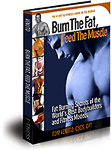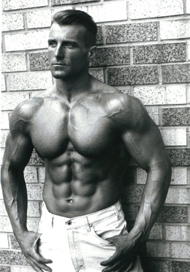Title:Should You Weigh Yourself Everyday or Throw Away Your Scale?
By : Tom Venuto
URL: www.BurnTheFat.com!
Word count: 1363 words
Have you ever had a weight loss expert tell you to “throw away your scale?”… 
or maybe you heard that too much focus on scale weight can turn you into an obsessive-compulsive (sound familiar?). Well… body composition is more important
than body weight – you won’t get any argument from me about THAT. But… what if I told you that research supports a strong correlation between daily weigh-ins and
long term weight loss success? Yes, I said DAILY weigh-ins. Do you think that’s crazy, or could this habit be something that might help you increase your fat loss success?
This week’s Burn the Fat Blog Q & A column answers…
QUESTION: Tom, I know your www.BurnTheFat.com! recommends weekly
weight and body fat measurement, but what do you think about daily weigh-ins? What about using a moving average? The problem with daily readings is they may fluctuate based on a number of factors. You never know which is an “up” and which is a “down” reading. But I was thinking the same could be true weekly. You don’t know if your weekly weigh-in is actually a bit higher than your “true” weight or a bit lower. A moving average would smooth out those variances and give you a better idea of your “real” weight and the general trend of your improvement.Thoughts?
ANSWER: It’s normal for your body weight to fluctuate, so it’s important to control and account for those variances when you weigh-in and chart your progress. Your weight fluctuates not only on a weekly and day to day basis,but even within the same day – sometimes by several pounds just from morning to night!
Changes in weight can be based on numerous factors including hydration (loss or gain of water weight) and contents of your digestive system (how recent the last meal and bowel movements were). A moving average could definitely smooth out the variances.
To get accurate weigh-ins, consistency is also a key. Always do your best to duplicate the weigh in conditions every time: Fed or fasted, clothed or not clothed, bladder empty or full, pre or post workout, morning or evening, high carb or low carb day, amount of fluids ingested, diuretic substances consumed,etc. If you control for all these factors, you’ll get more accurate weight and body composition data and also help smooth out the variances.
As part of the www.BurnTheFat.com!Burn The Fat Feed The Muscle program, I recommend taking a body fat measurement only once a week (once every two weeks would probably suffice, but I prefer getting weekly feedback). I also recommend weighing yourself “officially” once a week, on the
same scale, under the same conditions. But I also believe daily weighing can be helpful as long as you’re controlling the variables and you don’t obsess over daily fluctuations (instead, using the multiple data points to track the trend over time).
If you weigh yourself daily, you can log your weight into a spreadsheet and then convert your progress into a graph with the date on the horizontal axis and weight on the vertical axis. The key is to look for the trend over time. Body fat (and weight) should be heading down in a long term trend and lean body mass should be staying relatively stable. You could also add a column for 7-day moving average if you choose, which smooths out the fluctuations or “noise.” (okay, okay, so only the analytical, number-crunching “geeks” will go that far…but then again, we have quite a few of them in our Burn The Fat ranks… and someof them are pretty darn LEAN!)
Another benefit of tracking your measurements frequently is that you can compare your weight and body composition results to your training and nutrition for the same time period to look for correlations between methods and results and hopefully learn what methods work the best for you.
Many weight loss experts say you should “throw away your scales” and that it’s a bad idea to weigh yourself daily or even to weigh yourself at all. I disagree and there’s a LOT of research showing that self monitoring behaviors such as tracking food intake, exercise, body weight and body composition helps to increase compliance and improve weight loss and
maintenance.
It’s common sense for weight management, but also well accepted wisdom in teaching, coaching and business management — that you can only expect what you inspect – and what gets measured and tracked gets improved. When measurements are reported to an authority figure, and you are “graded” and held accountable for what gets measured and tracked, results usually improve even more.
Although weight gain can sometimes happen quickly when there are sudden changes in environment, body weight and body fat usually tend to “creep” when left unchecked. Folks who don’t monitor weight or body composition seem to wake up one day and realize they “suddenly” got fat. Of course, what really happened is that tiny increases in fat and waist line went unchecked and therefore,
unnoticed over a long time period.
Successful weight reducers and maintainers have a common behavior pattern and that is they keep track of their weight. Weight monitoring could be daily or weekly, but either way, most people will get best results by checking it regularly. This way, if results are negative, you’ll be alerted and you can increase compliance and “buckle down” or change your strategy. Frequent (weekly
or even daily) weighings provide a feedback tool which increases awareness,allowing for a quick course correction.
By the way, people who have to wear well-tailored suits or tight fitting clothes have a feedback mechanism they can check themselves with every single day. Those who wear baggy clothes / elastic waist bands who also do not weigh themselves tend to succumb to the weight creep and not realize it. If you don’t have to dress up for work every day or if you wear loose, baggy clothing most of the time, its not a bad idea to have a pair of “lean jeans” that you try on regularly just to see how they’re fitting.
Just to be fair and show both sides, the only potential criticisms /drawbacks to frequent weighing that remain include:
(1) It might encourage obsessive behaviors (IF someone is psychologically susceptible), and
(2) There may be only a small amount of measurable progress after one week,and no measurable change after just a day – both of which might lead some people to impatience and frustration if they don’t have a long term time perspective and/or they don’t understand how to use statistics.
So, I admit, daily weighing may not be appropriate for everyone. In fact, I think it’s best practice to suggest measuring and recording body weight “at least once a week” and then leave it up to the individual to decide whether they want to weigh daily or not.
Keep in mind, weigh ins are not an absolute necessity and the mere act of weighing yourself every day or every week doesn’t guarantee more weight loss.
There are people who for various reasons, choose not to weigh themselves at all, who never go near a scale who successfully lose weight and maintain their ideal
weight.
However, regular weigh-ins have consistently been correlated with improved weight loss and some research says that daily weigh ins correlate even more highly with long term success than weekly weigh ins. Studies have also concluded that people who weighed themselves regularly improved weight maintenance and avoided weight regain/cycling as compared to people who didn’t weigh themselves at all.
There’s one last thing I want to re-emphasize and that’s the importance of measuring and tracking body composition (fat vs. muscle) not just scale weight.
Understanding body composition (not just body weight), and developing the patient-person’s lifestyle mindset are the final keys that really complete
this self-monitoring advice and helps you avoid compulsive behaviors or obsessing over short term results. This is exactly the approach I outline in the Burn The Fat System, which teaches you how to leverage your daily and weekly feedback results to help you burn stubborn body fat and strengthen your metabolism over the long haul.
Train hard and expect success!

Tom Venuto, author of
Burn The Fat Feed The Muscle
www.BurnTheFat.com!
Founder & CEO of
Burn The Fat Inner Circle
Burn the fat inner circle
About the Author:
Tom Venuto is the author of the #1 best seller, Burn the
Fat, Feed the Muscle: Fat Burning Secrets of the World’s Best Bodybuilders and
Fitness Models. Tom is a lifetime natural bodybuilder and fat loss expert
who achieved an astonishing 3.7% body fat level without drugs or supplements.
Discover how to increase your metabolism and burn stubborn body fat, find out
which foods burn fat and which foods turn to fat, plus get a free fat loss
report and mini course by visiting Tom’s site at: www.BurnTheFat.com!









